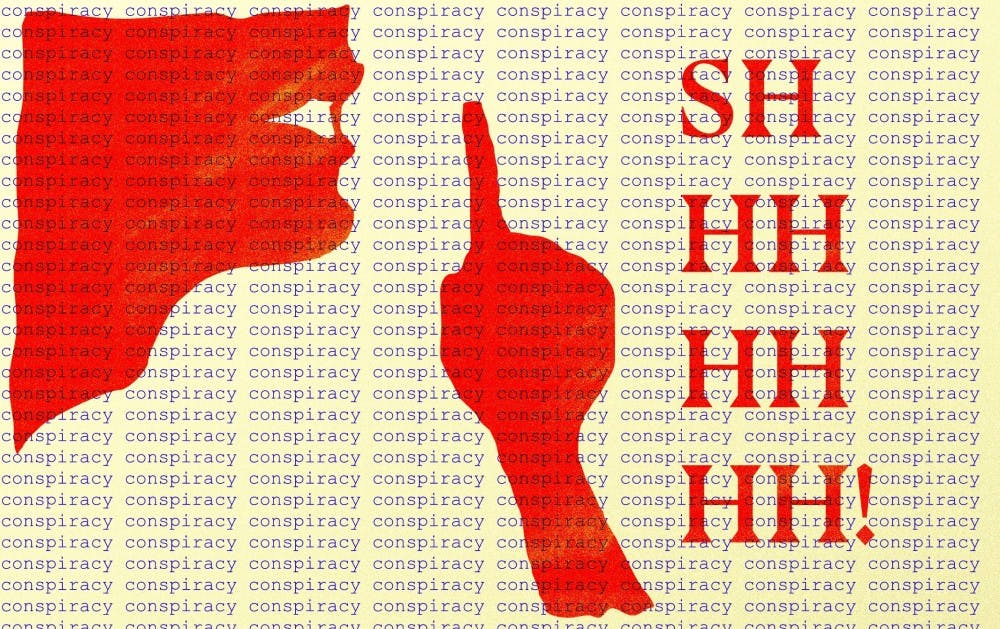I took an Uber the other day, and what started off as a normal, quiet ride ended up as a heated discussion about 9/11 being an inside job.
The Uber driver wholeheartedly believed in his view and even explained his reasoning for believing in a conspiracy theory that has been debunked time after time: that former President George W. Bush "did 9/11.”
I was amazed how strongly he believed in this conspiracy theory that echoed other people’s views of the tragedy that occurred more than a decade ago.
The internet has given new life to many conspiracies, which spread easily through social media and persuade swaths of the public.
Dan Gillmor, an associate professor teaching digital media literacy at the Walter Cronkite School of Journalism and Mass Communication, said people “can be skeptical of everything that comes from people in position(s) of authority.”
Although conspiracy theories may seem harmless, they have gained quite a following in the public and have proved to be a threat to society.
Gillmor, for example, said the negligence behind the conspiracy theory that vaccinations cause autism is affecting the development and well-being of children.
False stories on Twitter travel faster than real news, according to a recent report from Massachusetts Institute of Technology. The rapid rate at which false information travels on social media presents a challenge to readers.
The report indicates that false stories are 70 percent more likely to be retweeted than real ones.
This could be because false stories are simply more captivating. Who wouldn't want to read lurid stories of political backstabbing or classic tabloid fare of aliens abducting Hillary Clinton? Extreme headlines, when not properly vetted for accuracy by readers, can travel as fast as a bullet.
Last year, the Avril Lavigne conspiracy picked up traction through Twitter, sparking the ongoing debate about whether she is alive or dead and replaced with a doppelganger.
Keith Brown, the director of the Melikian Center at ASU, put it simply: "You've just been punked by the internet," referring to people falling for conspiracy theories.
Another major issue, Brown said, is that bots increase the difficulty of navigating through unproven information on the internet, because they are programmed to make certain topics trend on social media.
The draw that conspiracy theories have on the pubic is appealing.
“People fall for conspiracies over social media if the information is in more simple language, repeated from several sources and links to people's beliefs,” said Danielle McNamara, a psychology professor at ASU, in an email interview.
But people can combat against the dangers of conspiracy theories. Gillmor suggests readers check other sources and remain skeptical in order to debunk conspiracy theories that have yet to be proven.
“When I see something that is sensational in some way, my first response is to say, 'That’s really interesting — if it’s true,” he says.
There have been a few instances of conspiracy theories that were vindicated to some extent, ranging from CIA efforts to test LSD on citizens to the Nixon-Watergate scandal in the 1970s. But these conspiracy theories have been proven by various sources as opposed to ones like the Obama birther conspiracy, which questions the former president's U.S. citizenship. These kinds of stories are without basis.
But the majority of these conspiracy theories that exist online have been used to target people, leaving the internet a no-man's land. Famous conspiracy theorists like Alex Jones, who pushed the notion that the Sandy Hook massacre was fabricated, and Jack Posobeic, who pushed the Pizzagate false story, intentionally tweet false information to push their agendas.
“I hope people remember to pause before they share,” Gillmor says.
Reach the videographer at Abdel.Jimeneztoscuento@asu.edu or follow @abdel1019 on Twitter.
Like The State Press on Facebook and follow @statepress on Twitter.




